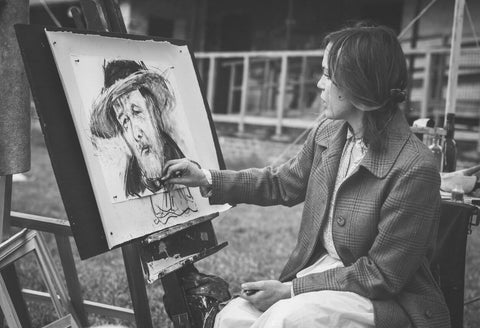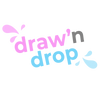ALL YOU NEED TO KNOW ABOUT DRAWING

What is drawing? Drawing is one of the most popular artistic techniques, through which using specific tools, a visual composition is created on a given plan. The basic drawing material was charcoal, which was mainly used for sketches, sketchy drawings and also for painting pictures.
When making a charcoal sketch, you didn't have to worry about the outline created with it interfering with the next steps of creation - because after setting the target composition, it was covered in ink, and everything else. The basically no longer needed charcoal drawing was removed by a flag with bird feathers. Charcoal was used until graphite pencils were invented in the 19th century. One can distinguish several types of drawing - they were divided according to the type of material used for drawing.
In the rest of this article, you will discover the types of existing drawing and the types of materials used.
What is greased charcoal drawing?

Greased charcoal is a variant of charcoal, which was created as a result of various experiments carried out in order to make loose and brittle charcoal more durable. They also wanted to eliminate from the creative process the problem of fixing the drawing which, if poorly executed, was detrimental to the work. Through experiments - soaking charcoal with drying oil - we finally managed to get a material created with new properties.
Greased charcoal, in addition to the advantages of regular charcoal, also had a deeper, saturated line, which dried out after a while. Importantly, it was not sensitive to friction. Therefore, this charcoal was avidly used to draw nudes and portraits.
The technology flourished especially in the 17th century. As a backing, soft, absorbent paper is most often used, without the use of mortar, although its presence is sometimes noticed. A significant disadvantage of this tool is its lubrication, because when the coal absorbs too much oil or is not dry enough - it returns it to the substrate; most often to paper, leaving unsightly greasy stains.
What is metal pencil drawing?
Drawing technique also includes drawing with metallic pencils, which, due to the type of metal, can be divided into:
- Silver Pencil
- pencil
- a copper pencil
- a pewter pencil
- iron pencil
Characteristic features of this technique include precision and clarity of line, which is often compared to etchings and etchings on copper. In the past, a metallic pencil was one of the essentials of an artist. Today it is a forgotten tool and few people really know about its existence. This tool was mainly used to make sketches or underlays for works. A pencil was particularly popular leaving a cool, greyish color even on a clean, unmortared underlayment.
What is graphite pencil drawing?

The graphite pencil, probably known to all of us, is a relatively young technique, since it was created in the middle of the 16th century before the creation of the pens of the new generation. At that time, graphite, which is the basic component of a graphite pencil, got into the product. A breakthrough in graphite production was in the year 1664, when the Borrowdale graphite mines in Cumberland were established. Thanks to this, the English became almost the only producers of this type of pencils.
From the 18th century, pencils began to be made of ground graphite with sulfur and a binder, or with rosin, wax and talc. However, it was not until 1790 that graphite pencils in the present form, the so-called graphites and kaolin.
As for the substrate, it is almost always and exclusively of all types and grades - the stronger the grain of the paper, the darker the line left by the graphite. It should be remembered that strong pressure should not be applied to the paper, as it is always disadvantageous.
Indeed, the structure of the paper is destroyed and mainly by breaking the grains; this takes away the freshness of the lines and makes it impossible to correct and correct without destroying the substrate.
What is chalk and red chalk drawing
In the case of the chalk and sanguine drawing technique, we must first explain the somewhat misleading name chalk, which refers us directly to natural chalk. The materials we are talking about are colorants which like pastel have loosely bound particles. Thus, chalk and sanguine are actually soot or naturally colored earth that has been adapted for artistic purposes.
Physically, these tools are very similar to charcoal, but they are much more resistant to mechanical factors. Natural chalk is a calcareous sedimentary rock formed at the bottom of water reservoirs. In addition, it therefore includes the remains of small marine organisms and traces of quartz, chalcedony and opal. Thanks to this, depending on the composition, this rock can have different shades: snow-white, cream or gray.
In this technique as an additional tool, a metal stand is used, which is used to fix brittle chalk or sanguine. The most frequently used support is white or tinted paper, cardboard or fabric. Each of the materials should be rough enough for the chalk and sanguine to settle on. Mortar can be used with this technique, but is not necessary. Usually the mortar is a thin layer of pumice stone mixed with the starch glue.



